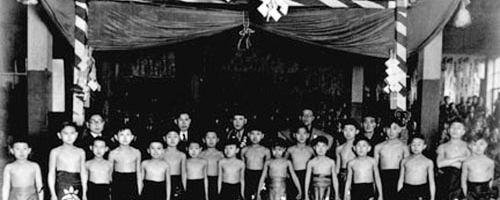“Is the cell stuff cool?” asked one student, looking like a kid in a candy store at the clean, tiny figures and hand-carved animals, plants and picture frames in Shelby Davis’ series of small, fantastic displays. “I don’t have a cell phone,” she said. While Portland State’s MK Gallery has seen plenty of people coming and going on their way to and from classes before Davis’ MFA show opening this week, fewer have been stopping to take the guided tour accessible by cell phone.
Notions of accuracy, let go
“Is the cell stuff cool?” asked one student, looking like a kid in a candy store at the clean, tiny figures and hand-carved animals, plants and picture frames in Shelby Davis’ series of small, fantastic displays. “I don’t have a cell phone,” she said.
While Portland State’s MK Gallery has seen plenty of people coming and going on their way to and from classes before Davis’ MFA show opening this week, fewer have been stopping to take the guided tour accessible by cell phone.
Instead of a tour of how the curator wants the show to be seen, as is usual in large museums, the recorded stories accompanying each display are told from the point of view of some other person who influenced the artist. This makes the show, entitled This All Happened, More or Less, a kind of map of Davis’ experiences in graduate school and in life, but one which he cannot control on his own.
Walking around the displays and listening to the stories that explain many, but not all, of the details Davis chose to render in each scene, the gallery viewer has the opportunity to bond with contemplative wooden miniatures that seem to be listening to their own stories while taking part in each adventure.
“It was an attempt to throw a wrench in my own gears,” writes Davis in his artist’s statement about the micro-sculptures arranged around each complex scene in the gallery. The figures take the place of both viewers looking in on the scene, usually an incomplete, partially one-sided memory, and of the characters themselves looking out.
Arranged along a kind of oblong bar Davis built with fresh wood in the gallery, the figures are a symbol of lovingly rendered but imperfect handicraft among the carefully measured, architectural carpentry, adorned as they are with both rectangles of knitted yarn and tiny glass and metal accoutrements.
Fitting for a thesis show, the 14 small exhibits emphasize both the artist’s desire to master subjects and his inability to take the subjects out of other people’s hands. Besides willfully sacrificing the perfectly detailed craftsmanship by carving tiny, imperfect figures, Davis surrenders further parts of his work to other people, making the stories both more–and less–complete than they would have been in his hands alone.
Reading from scripts along the gallery tour, the subjects of each story have the opportunity to laugh at Davis, as Walter Lee does in a warbled description of borrowing a wooden figure with removable pants. Some speakers are clearly reading, while others attempt to act, as in “Betty and Roger,” in which a couple describes their shared and obviously oft-told experience of watching a dancer in a tango club in Buenos Aires.
Combining detailed concentration on each story and an overwhelming personality in the gallery’s space (a laid wooden floor, elegant bench and newly constructed shelf for the comments book and postcards) with the difficult process of letting other people’s voices elaborate on the story, Davis has built a fascinating model of process, perfectionism and experimentation.
Among the most compelling displays is one in which Davis departs almost totally from his most comfortable mediums, adding in wood only a small figure facing the video screen in which Davis goes on a walking tour of Beverly Cleary’s Northeast neighborhood with Professor Harrell Fletcher and Fletcher’s daughter and dog. However, he films little else than the baby Beatrice’s face, expressing a wistfulness for childhood and fatherhood, for family and even for the established manhood of having children–an exploration that is daring and deep.This All Happened, More or Less
MK Gallery (until May 9)2000 S.W. Fifth Ave. (room 210)Opening reception: 6 p.m. to 9 p.m., Thursday, May1Regular gallery hours: 9 a.m. to 5 p.m., Monday through Friday




